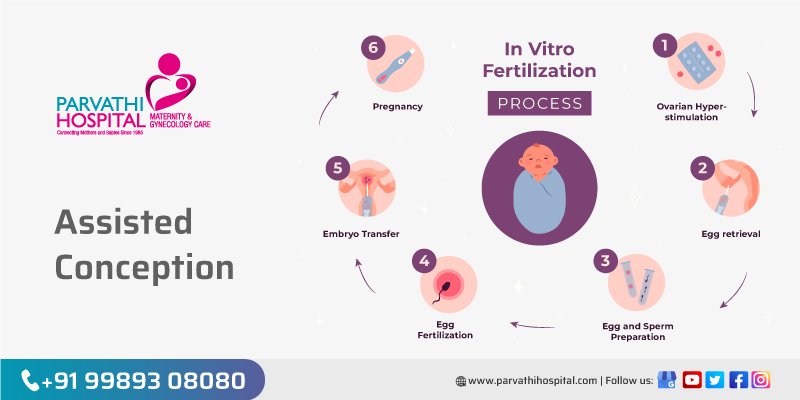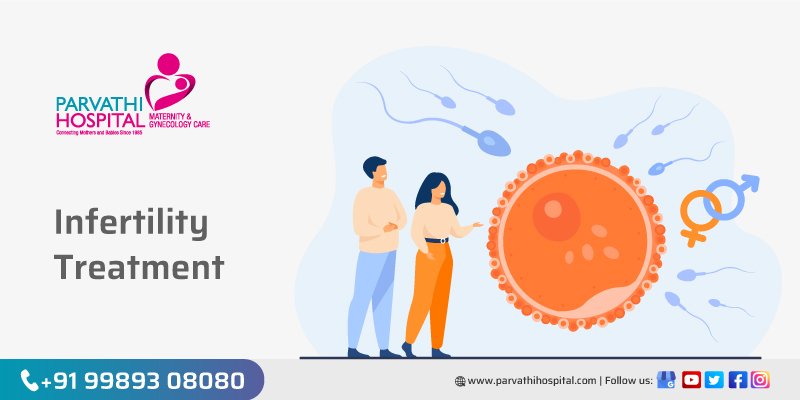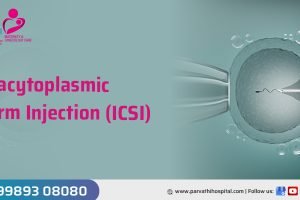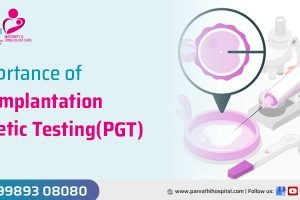Infertility in Men and Women – Causes and Treatment

Infertility is when one cannot conceive after a year of trying. Endometriosis, uterine fibroids, and thyroid problems are a few examples of female infertility causes. Low testosterone or sperm counts may be seen in men with fertility issues. The likelihood of Infertility rises with age.
A woman may also be diagnosed with Infertility if she can conceive but cannot carry a pregnancy to term. One who has never been able to conceive will be diagnosed with primary Infertility. A woman with at least one successful pregnancy will be given a secondary infertility diagnosis. You can have a visit to the best gynecology hospital in Hyderabad if you suspect or experience any symptoms of Infertility.
Infertility in men and women affects the female and male partners equally. However, an illness does not necessarily cause Infertility. Your lifestyle may also play a role; stress, obesity, excessive alcohol intake, and smoking can all affect women’s Infertility.
Symptoms
Not being able to get pregnant is the primary symptom of Infertility. There might not be any other evident signs. Infertile women can experience irregular or nonexistent menstrual cycles. In some circumstances, infertile men may exhibit symptoms of hormone imbalances, including changes in hair growth or sexual function.
Infertility’s signs and symptoms are frequently connected to other underlying illnesses. For instance, 10 to 15 percent of occurrences of untreated chlamydia will result in pelvic inflammatory disease (PID). PID causes the fallopian tubes to become constricted, preventing conception.
What Are the Signs of Infertility in Women?
· Irregular periods
· Painful or heavy periods
· No periods
· Hormone fluctuations
· Pain during sex
Signs of Infertility in Men
· Changes in sexual desire
· Testicle pain or swelling
· Problems maintaining erection
· Issues with ejaculation
· Small, firm testicles
Both men and women can have Infertility due to a variety of conditions. However, the signs and symptoms of each can be quite different. Therefore, you must speak with your doctor if you’re worried.
Causes of Male Infertility
Male infertility factors account for 20 to 40% of the population’s overall infertility prevalence, which the WHO estimates to be between 15 and 20 percent. Additionally, about 23% of men in India have Infertility. Infertility causes and treatment typically result from problems with the following:
· Effective sperm production
· The quantity of sperm, or sperm count
· The sperm’s structure
· Movement of the sperm, which involves both the sperm’s wriggling motion and the direction of the sperm through the male reproductive system’s tubes
Male Infertility is more likely in older men, those who smoke, drink heavily, are overweight or obese, and those exposed to pollutants, including pesticides, herbicides, and heavy metals.
Causes of Female Infertility
Approximately 8% of currently married women had Infertility in India, most of whom were secondary infertile (5.8%). The WHO report states that adopting the “age but no birth” criterion, the prevalence of primary Infertility in India was 3.9% (age-standardized to 25-49 years) and 16.8% (age-standardized to 15-49 years). Female Infertility can be caused by many causes that impact or interfere with the biological processes listed below:
· Ovulation occurs when the mature egg is expelled from the ovary.
· Fertilization occurs when sperm and egg meet in the fallopian tube after passing through the cervix and uterus.
The risk factors affecting women Infertility are increasing age, smoking cigarettes, heavy use of alcohol, being overweight, obese, or significantly underweight, and having certain sexually transmitted infections (STIs) that can damage the reproductive system.
Diagnosis
Several diagnostic methods are available now for Infertility. A fertility specialist will suggest particular diagnostic tests after a couple has undergone evaluation through a thorough physical examination and medical history.
Doctors typically examine the female pelvis, the vagina and cervix, the semen, the female hormone system, ovarian reserve, and the female pelvis to diagnose Infertility.
A female reproductive issue may also be detected or ruled out with these tests:
· Pelvic Exam
· Blood Test
· Transvaginal Ultrasound
· Hysteroscopy
· Saline Sonohysterogram (SIS)
· Hysterosalpingogram (HSG)
· Laparoscopy
A male fertility issue may be identified or ruled out using these tests:
· Semen analysis
· Blood test
· Scrotal ultrasound
If a woman under 35 is still not pregnant after a year of trying, she should visit a doctor. The likelihood of a woman getting pregnant decreases as she gets older. For instance, a woman in her 30s has half the fertility of a woman in her 20s. Regardless of gender, you should seek medical attention right once if you have a risk factor that affects fertility.
Treatment
A person’s age, the duration of their Infertility, personal preferences, and general health are just a few factors that will affect the type of treatment they receive to help them become pregnant naturally.
Frequency of Intercourse
The first method a couple trying to conceive might want to try is increasing their frequency of sexual activity around ovulation. The average menstrual cycle lasts for 28 – 32 days. However, a female will typically ovulate between days 11 and 21, starting from the first day of the previous menstruation.
Anyone whose period is longer than 35 days or less than 21 days should schedule an evaluation visit with their gynecologist doctor.
Other Treatments
However, the timing of sexual intercourse might not be enough to support a couple’s ability to conceive independently. The underlying reason for Infertility will affect the treatments.
This can include erectile dysfunction drugs from Trusted Source for men. In addition, a clogged epididymis or a varicose vein in the scrotum can be treated surgically. Finally, doctors may give fertility medications to control or stimulate ovulation in females. Clomiphene (Clomid, Serophene), letrozole (Femara), dopamine agonist medicines, and several hormonal treatments might fall under this category.
Assisted Conception
Currently, the following procedures can be used for aided or artificial conception:
· Intrauterine Insemination (IUI)
· In vitro fertilization (IVF)
· Sperm or Egg Donation
· Electric or Vibratory Stimulation
The Final Word
There are several difficulties with Infertility. It might have an impact on your relationships as well as your emotional wellness. Infertility treatments can be expensive and put a burden on your budget. Your doctor can find the cause of Infertility. This first step assists in determining the best course of action to enable you to start a family successfully. The majority of couples eventually have children, while some choose adoption. You can discuss possibilities with your physician.











